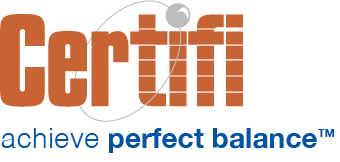Since 2020, the average insured pet annual growth rate has been 22.6%, with more than 5.5 million pets insured in 2023. Employers offering pet insurance are also on the rise. In 2022, 36% of employers with more than 500 workers provided pet insurance options, up from 22% just five years earlier. In short, pet insurance is one of the fastest-growing voluntary benefits employers offer.
That growth is putting pressure on insurers selling group pet insurance. As subscribers and groups grow, managing a manual billing process augmented by a home-grown billing system unprepared for increased volume and complexity wastes time. Instead, pet insurers are turning to more automated, accurate premium billing solutions.
If that’s you, here are six questions to ask potential pet insurance group billing software partners:
What built-in reporting is available?
Managing your billing process relies on complete and accurate data. Typical reports needed to manage pet insurance group billing include:
- Aging Reports – Reports aged receivables based on periods – 0-30 days, 30-60 days, 60-90 days, 90-120 days, and 120 days and greater. Look for the ability to break down aging reports by plan or client hierarchies.
- Delinquency Reports – This report details all delinquent entities based on system rules.
- Invoice Reports – Details of all invoiced billing transactions.
- Payment Detail Reports – Details all payment transactions made by an entity.
Look for solutions that enable you to export comprehensive data – like invoice and payment details – that can be fed to reporting engines – like Snowflake – for advanced analysis.
How configurable is the invoicing?
Your clients likely would prefer their invoices to include specific information. Some may want employee counts and premiums grouped by plan, while others may need a PO or contract number on the invoice.
Look for solutions with configurable invoices that enable configuration of summary and detailed information on the invoice. Also, ensure invoice generation occurs in multiple formats, like print, PDF, or CSV.
How does the pet insurance group billing software manage an employer that hasn’t paid the amount billed?
Employers don’t always pay the amount billed. They may try to account for retroactive changes in advance or fail to pay the amount billed.
First, look for systems that automate retroactivity, ensuring employers pay based on the billed amount. Systems that can ingest start and end dates and automatically create retroactive adjustments eliminate manual adjustments.
Then, look for solutions that leverage rules should employers make partial payments. That might be paying for a specific plan or population first. Alternatively, manually applying the payment to individuals is a feature to seek.
Consider solutions that include automated delinquency events. If an employer group underpays by a specific configured amount or percentage, look for solutions that can trigger an email or letter notifying them or someone without your organization.
How are retroactivity and credits managed?
We discussed retroactivity above, but find a solution that automatically creates adjustments based on retroactive enrollments, plan changes, or termination. Automating the process not only eliminates manual work but also improves accuracy.
For credits generated by retroactive changes, look for systems that apply the credit balance to the next invoice cycle. Ensure the premium billing solution can create a refund report that shows all groups with a credit balance should you want to refund them.
What pro-ration methods are available?
Employers want different pro-ration rules with mid-month additions, terminations, and plan changes. Look for systems that handle the desired pro-ration methods and confirm rule application by products or groups. Typical pro-ration methods include:
- Any day of the month
- Specific wash dates
- Daily pro-ration using calendar months or standard 30-day months
How can the software drive down billing costs?
Average premiums for pet insurance are comparatively low. Monthly accident-only policies range from $9.68 to $17.00, while accident and illness policies average from $31.94 to $56.30. As a result, prioritize solutions that minimize your billing costs. That includes:
- Eliminating manual work – Determine which steps in the billing process take the most time or drive the most expense and see if and how the solution automates them. That may be by applying payments, manually adjusting retroactive changes, or generating client-specific invoices. Whatever the case, analyze what’s taking time and determine what the software can do to reduce time and costs.
- Reducing technology costs – If using a home-grown, on-premise solution, you’re likely paying more for human and computing resources. Cloud-based solutions using cloud providers like AWS are likely more cost-efficient than on-premise solutions because they leverage cloud computing’s ability to scale up processing resources during peak billing tasks – like generating invoices – and scale down those resources for less compute-intensive processes. That speeds up the billing process while minimizing the cost of technology resources.
By carefully evaluating pet insurance group billing software solutions and prioritizing key features, insurers can significantly enhance operational efficiency, reduce costs, and improve customer satisfaction. By selecting a solution that aligns with your organization’s goals and meets market needs, you can streamline your billing processes to meet rapid business growth.
Certifi’s pet insurance billing and payment solutions help pet insurers save time and improve billing accuracy.



